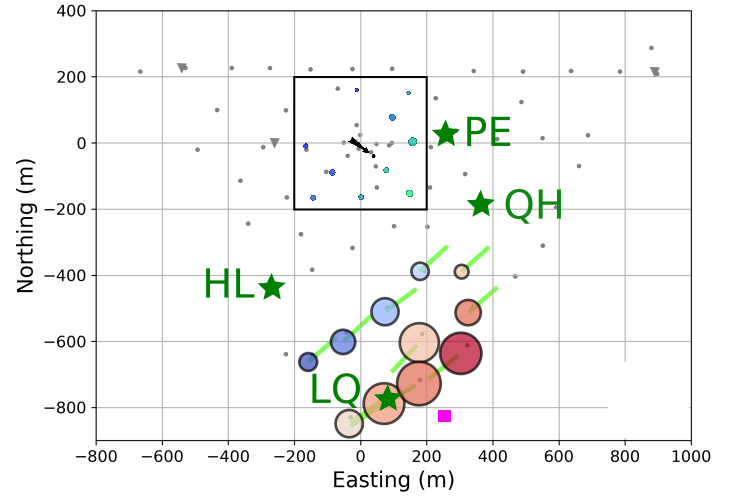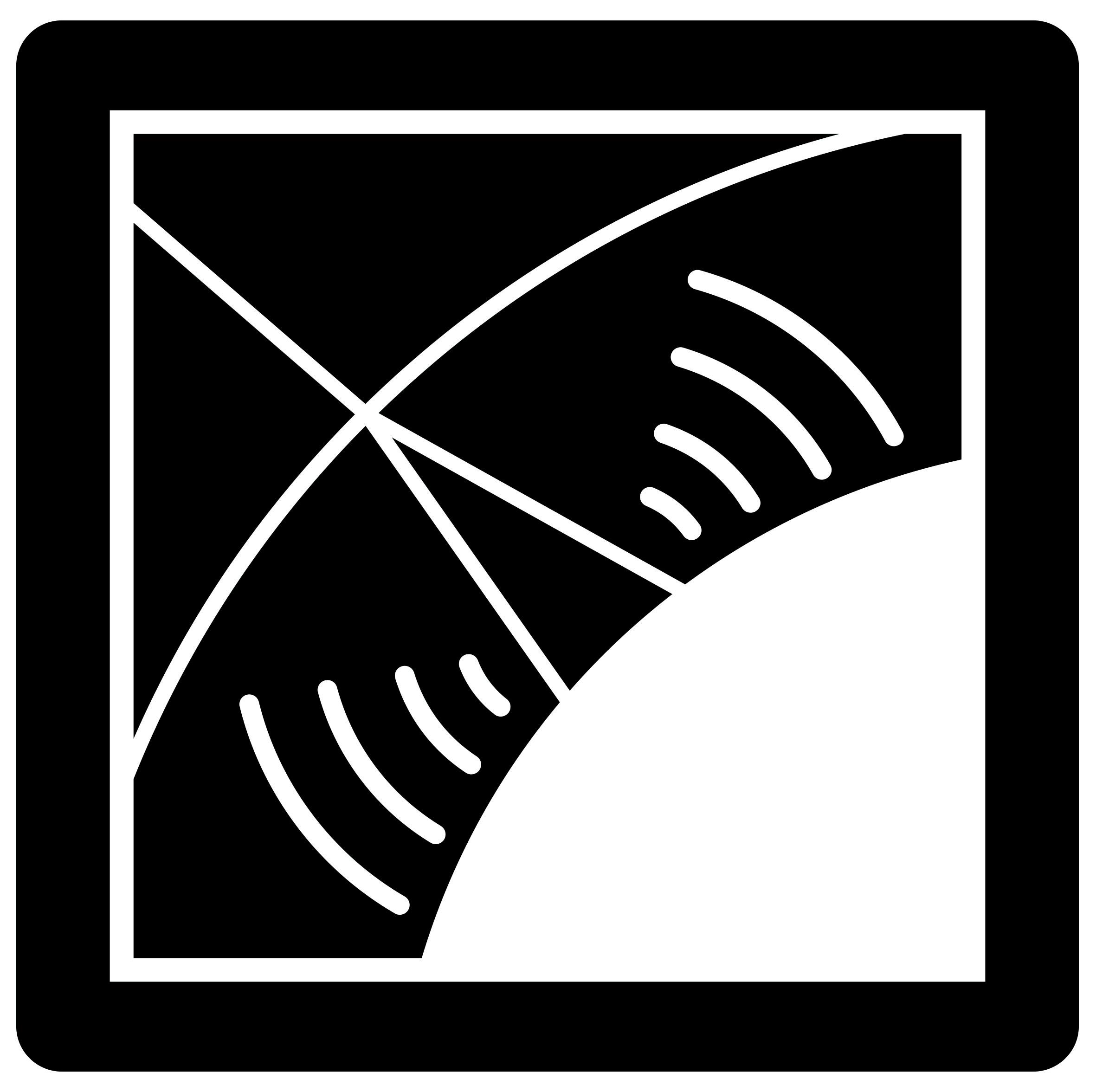Radio detection of cosmic rays in [1.7–3.7] MHz: The EXTASIS experiment
Since 2003, significant efforts have been devoted to the understanding of the radio emission of extensive air showers above 20 MHz. Despite some studies led until the early nineties, the band available below 20 MHz has remained unused for 20 years.
 Example of a coincidence recorded in the autonomous stations (colored circles), the scintillator arrays (circles in the black square) and in some of the low frequency antennas (green stars). The black arrow and the pink square marker give indications on the arrival direction and the core location of the shower. The light green segments give the polarization of the signal detected in the stations.
Example of a coincidence recorded in the autonomous stations (colored circles), the scintillator arrays (circles in the black square) and in some of the low frequency antennas (green stars). The black arrow and the pink square marker give indications on the arrival direction and the core location of the shower. The light green segments give the polarization of the signal detected in the stations.
Published by D.Charrier, R.Dallier, A.Escudie, D. García-Fernández, A.Lecacheux, L.Martin and B.Revenu in Astroparticle Physics Volume 113, December 2019, Pages 6-21. https://doi.org/10.1016/j.astropartphys.2019.05.001
